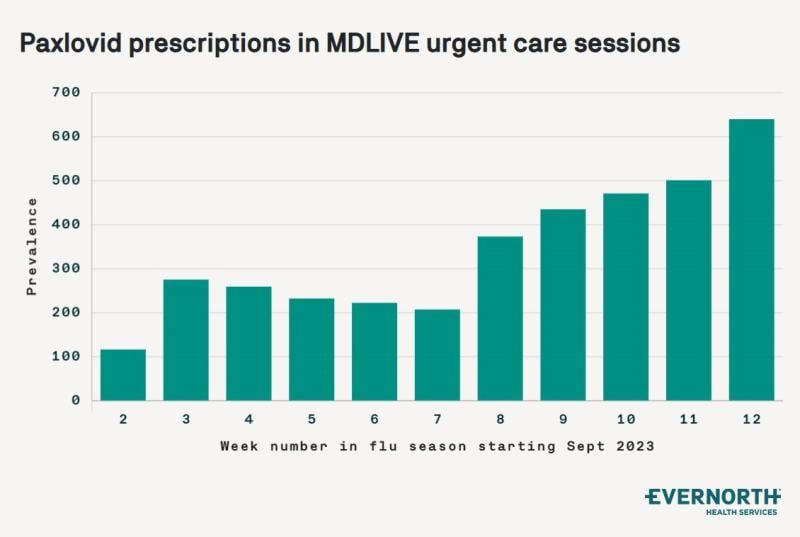Though prescriptions for antiviral influenza medications have declined somewhat since 2023, perhaps indicating that the United States might be less encumbered by the flu than in recent record-breaking years, healthcare providers still find themselves battling a surge above historic norms, according to data by the Evernorth Research Institute.
Researchers there examined pharmacy claims for more than 32 million people during current and past flu seasons and found an increasing prevalence of antiviral medication prescriptions since Thanksgiving 2023, though that’s tapered off slightly recently. More individuals experience flu symptoms severe enough to send them to physicians’ offices for prescriptions, and most of many of those forced to do so did not get the flu vaccination. Evernorth, a Cigna subsidiary, tries to develop cost-effective delivery systems for pharmacy benefits.
Urvashi Patel, Ph.D., vice president of the Evernorth Research Institute, told Fierce Healthcare in an email that “since the shift to remote work from the pandemic, many employees who used to get their flu vaccines at the office are no longer able to. This may change as more workers continue to return to the office, but it’s likely a contributor to lower vaccination rates.”

vice president, Evernorth (Evernorth Research Institute)
Influenza caused at least 10 million illnesses, 110,000 hospitalizations, 6,500 deaths since August 1, 2023, according to the U.S. Centers for Disease Prevention and Control.
As Patel and other experts note, the COVID-19 pandemic continues to cast a long shadow over the healthcare system, including the way providers and patients approach controlling and avoiding influenza. Nonetheless, lessons learned pre-pandemic and over decades still apply.
Vontrelle Roundtree, M.D., the associate CMO of Evernorth’s MDLive, told Fierce Healthcare in an email that “viruses are especially troublesome in colder months when people are indoors and more likely to fuel the spread. As the weather warms, and more people are outdoors, we can expect the flu to subside. Let’s be clear, though, the flu can strike at any time, so year-round precautions, such as annual vaccinations and handwashing should always be prioritized.”

Patel said that the “entire healthcare ecosystem” needs to get behind flu vaccination efforts.
“The trends uncovered in this analysis shine a light on communities that are especially struggling and are good indicators for where we need to better promote vaccine education, outreach, and access going forward,” she said.

Researchers found that that youngsters under 18 have a higher need for antiviral medications than other age groups, and the CDC cited a 3.6% drop in vaccination among six- to 17-year-olds compared to the 2022 flu season.
In addition, Medicaid enrollees used antiviral medications more than patients covered by Medicare or commercial health plans. Evernorth notes that Medicaid beneficiaries have to lowest rate of flu vaccinations.
Patel said that the findings “demonstrate the importance of precautions people can take to protect themselves from getting or fueling the spread of the virus, such as vaccinations to prevent severe symptoms, handwashing, staying home while feeling sick, and wearing masks when needed.”
COVID-19 made these precautions part of the public conversation.
Roundtree said that “the pandemic helped to normalize many precautions, such as masking and staying away from the office at the first signs of illness by taking a sick day or working remotely.”
Patel hopes that providers and health plans can put the findings of the Evernorth study to good use.
“Analyses like these that can help clinicians home in on certain individuals who may be at increased risk are a great example,” she said. “Another opportunity is for payers to alert clinicians about patients who have not received their vaccine through electronic medical records, so that clinicians can educate patients about the importance and provide onsite vaccines during appointments when possible.”